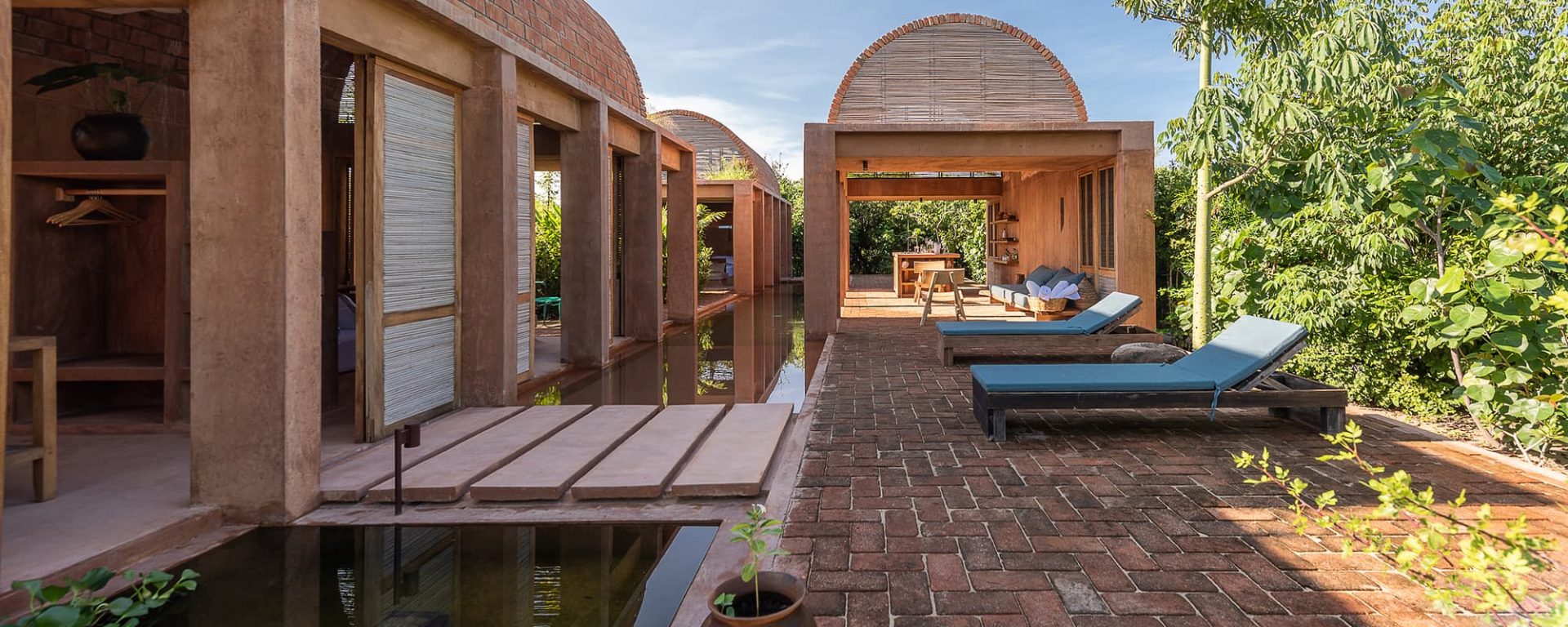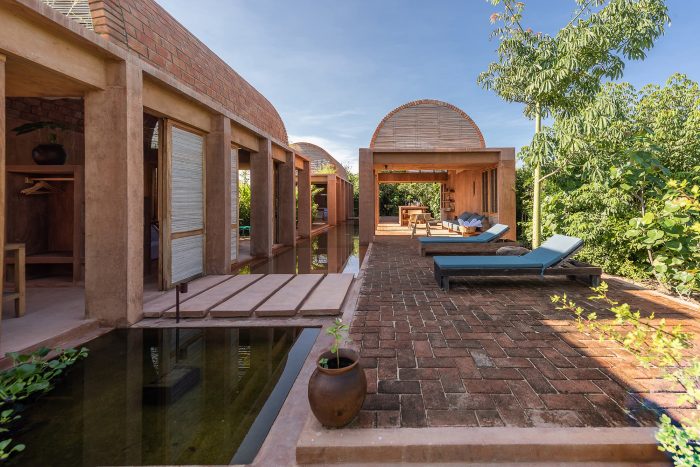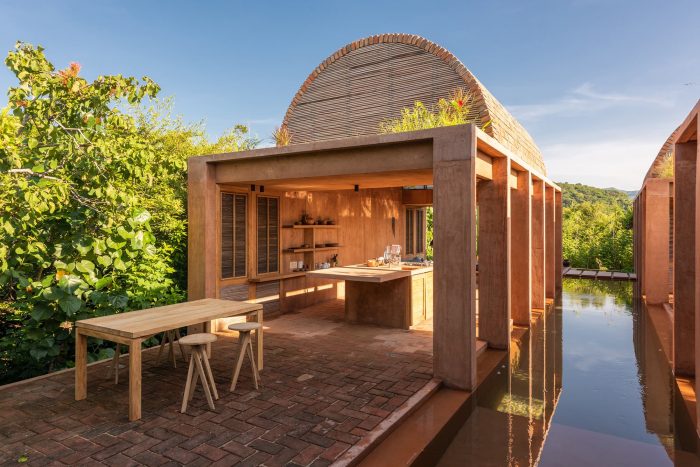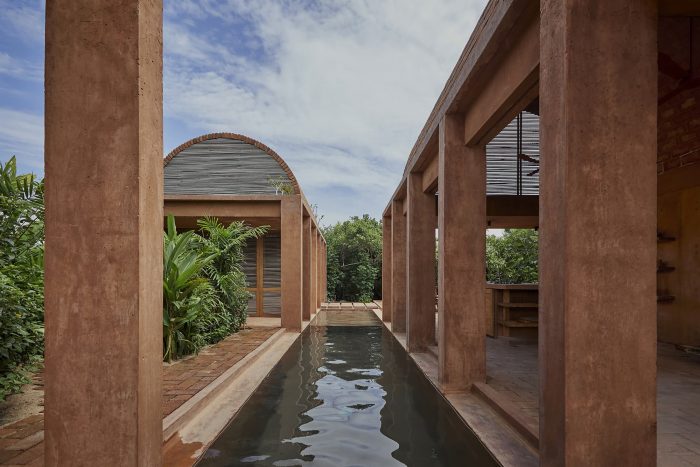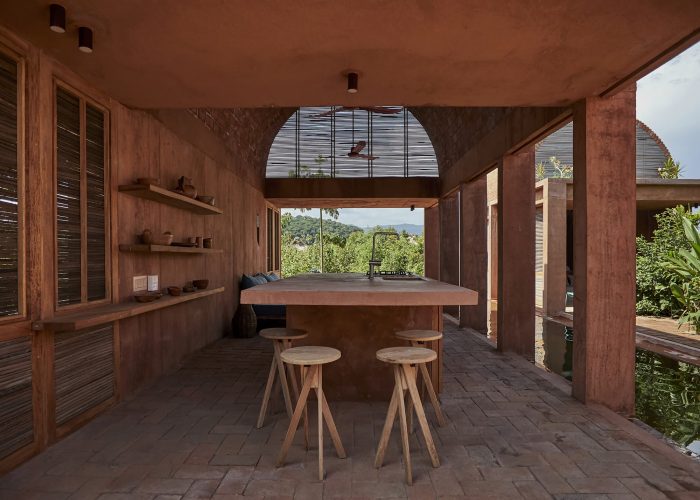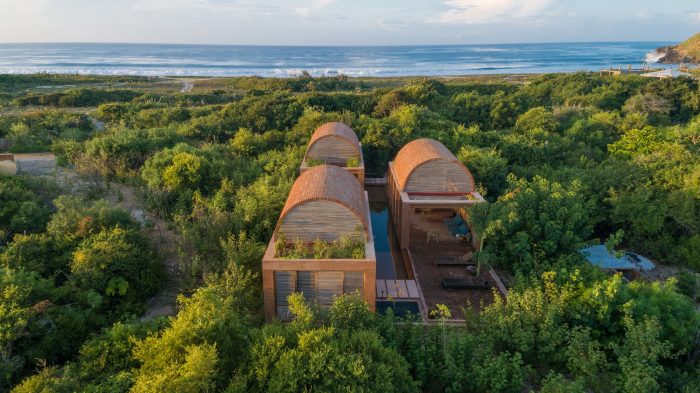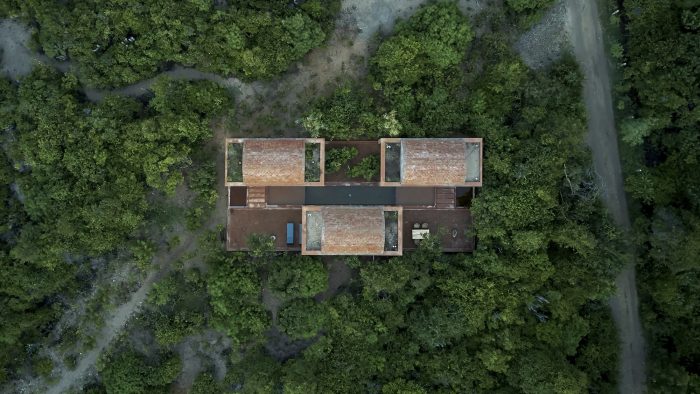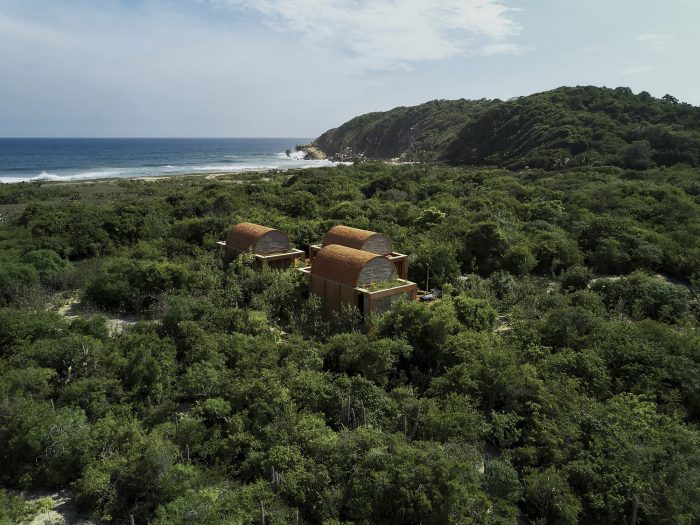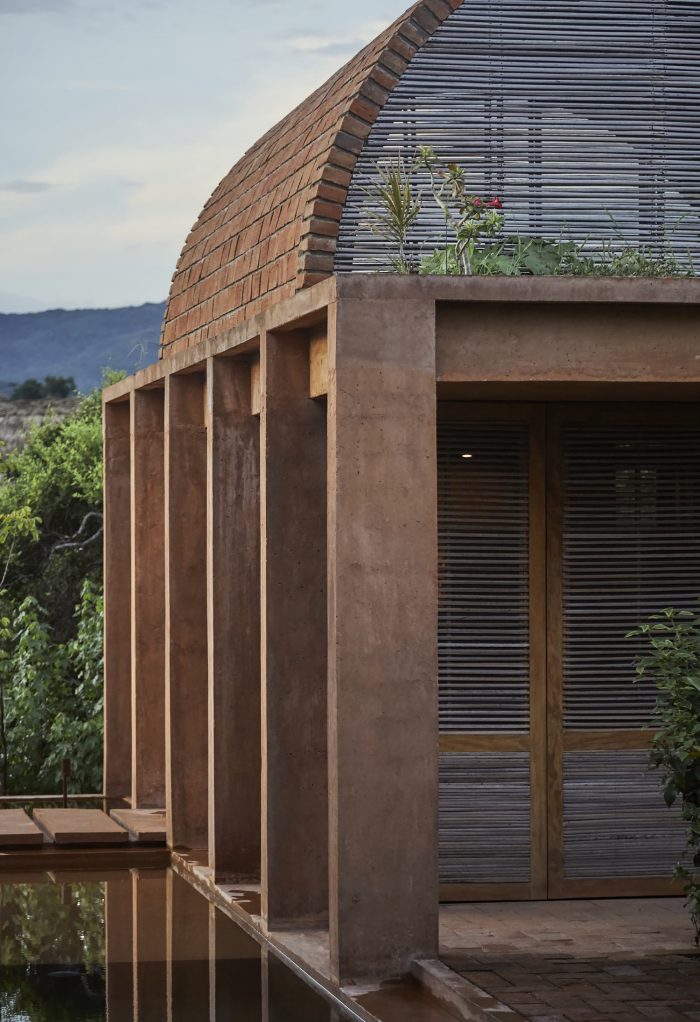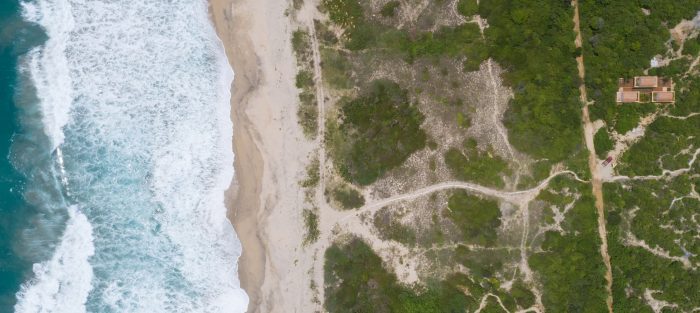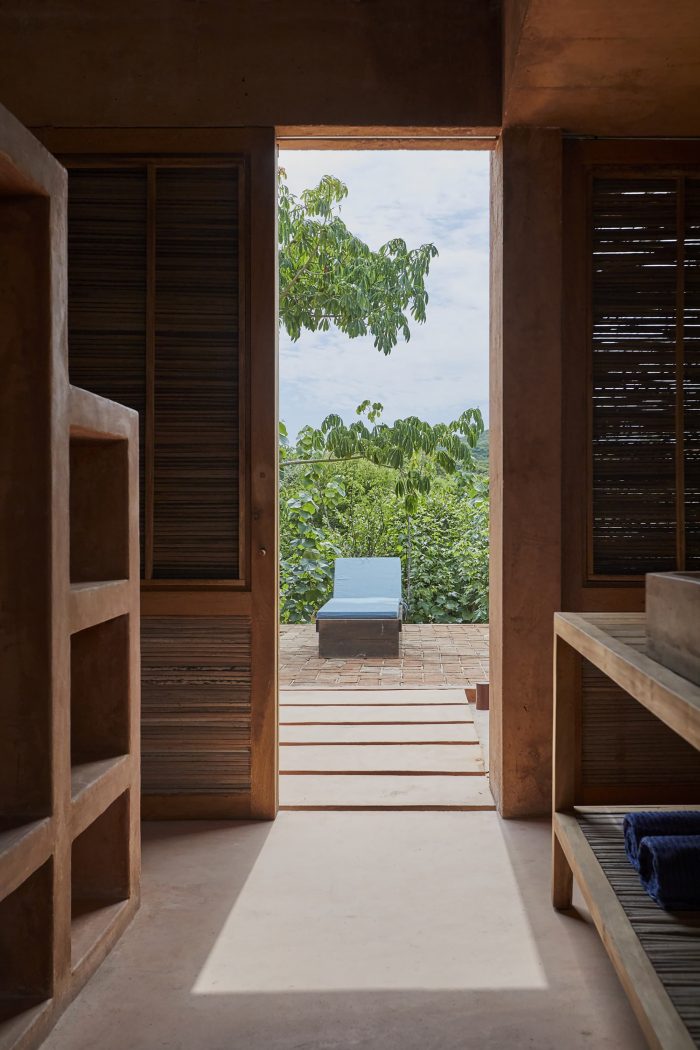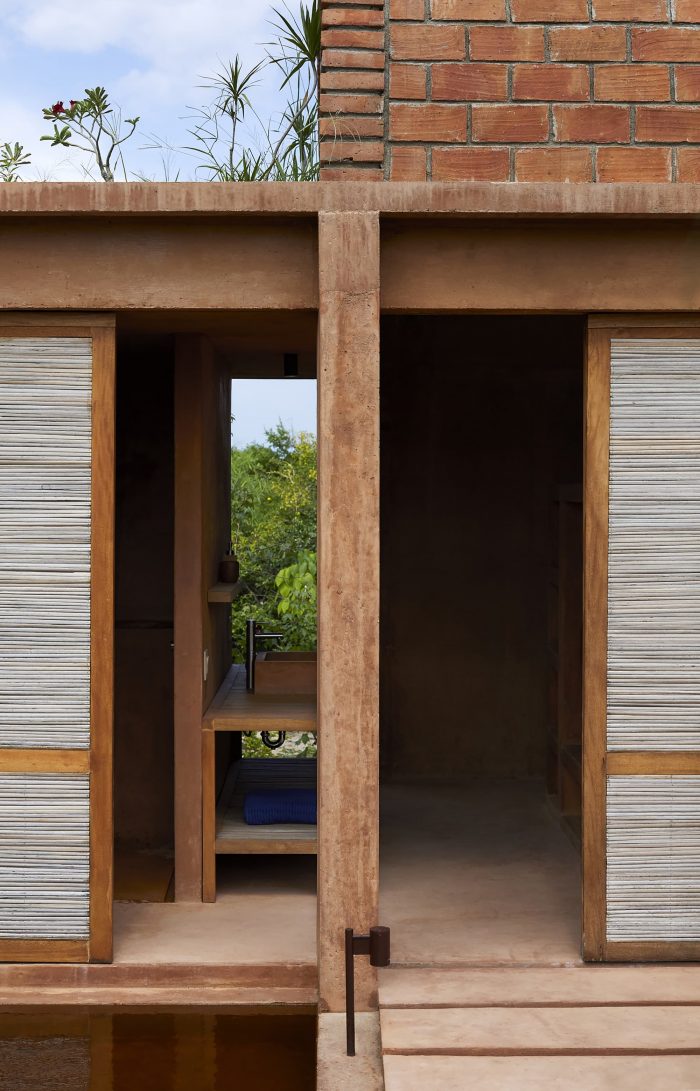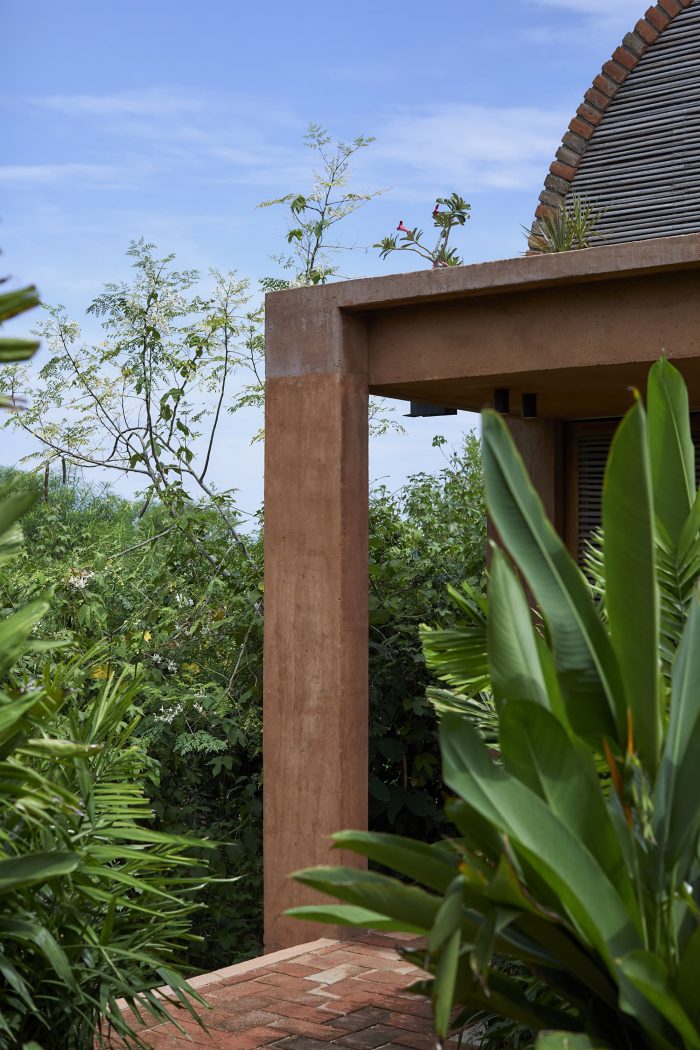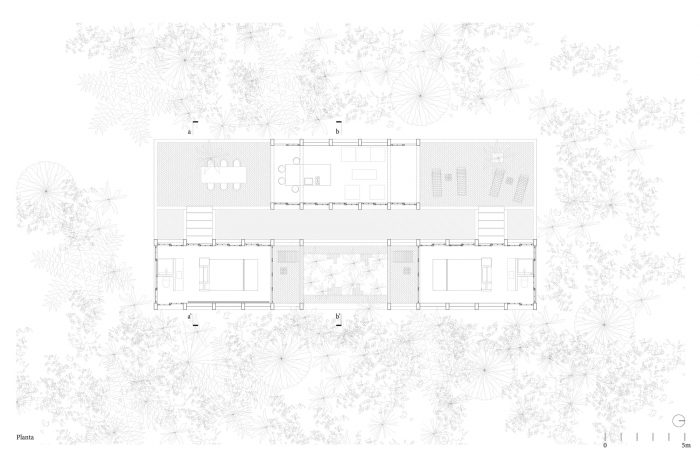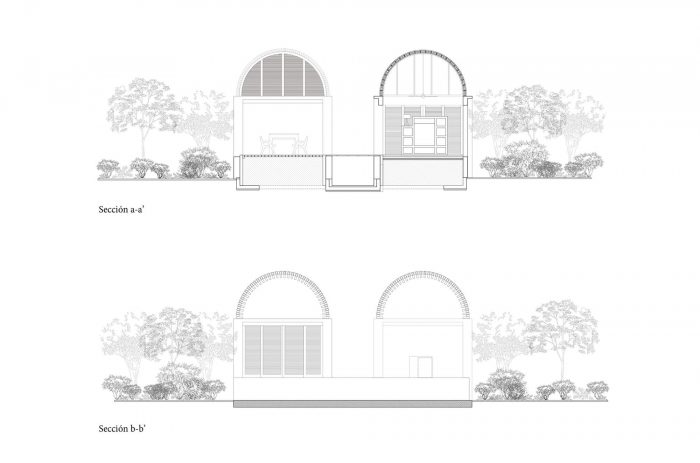走近Casa Volta时,人们首先注意到的是三个砖砌的拱顶漂浮在茂密的瓦哈卡海岸植被中间。也许这只是这里的高温和潮湿引起的幻觉。之后,沿着一条深入植被的小路,这些拱顶消失了。然后是一片空地,令人惊讶的是,在一个长长的池塘旁边出现了一张小凳子,两边都是对称的柱子和它在水中的倒影。人们似乎来到了一座废弃的古典寺庙。
The first thing one notices approaching Casa Volta are three brick vaults floating in the middle of the dense Oaxacan coastal vegetation. Maybe it is just a mirage provoked by the heat and humidity of this place. Afterwards, following a small path deep into the vegetation, the vaults disappear. Then a clearing opens, and surprisingly a small bench appears next to a long pond surrounded on both sides by symmetrical columns and its reflections on the water. It seems that one has arrived to an abandoned classical temple.
这座房子有着严格的卡尼安式的秩序。它是一个长方形平面,被细分为六个交替的长方形区域:三个开放的庭院和三个被拱顶覆盖的空间。房间和浴室位于其中两个,用木门和芦苇门开合;厨房、起居室和用餐区位于第三个,它总是开放的。而在一切的中心,水,作为一个恒定的存在,提醒着人们大海的亲近,即使从这里看不到,也只有300英尺远。一个实际和经济的情况决定了这个房子的材料。Casa Wabi基金会就在附近,这是一个烧制粘土的地方,在建造时有剩余的砖头可供回收。因此,出现了使用砖拱顶的想法,该拱顶建立在用粘土颜色涂抹的混凝土结构之上。这是一种简单的施工方法,可以满足紧迫的施工进度。另一方面,拱顶以及其两侧的芦苇格子,使风在封闭的空间内大量流动,而水则使外部变得清新。所有这些都同时产生了一种温暖和清新的气氛。
The house has a rigorous, Kahnian order. It is a rectangular plan subdivided in six alternating rectangular areas: three open courtyards, and three spaces covered by the vaults. The rooms and its bathrooms are located in two of them which open and close with timber and reed doors; the kitchen and living and dining area are located in the third one, which is always open. And at the centre of everything, water, as a constant presence, as a reminder of the closeness of the sea, that even if it can’t be seen from here, is just a mere 300 feet away. A practical and economical circumstance determined the materiality of this house. Foundation Casa Wabi is located nearby, a place where clay is fired, and where at the time of the construction there were leftover bricks available for recycling. So, the idea of using brick vaults built on top of a concrete structure pigmented with clay colour emerged. A simple construction method that would allow to fulfil the tight construction schedule. On the other hand, the vaults, along with the reed lattices on their sides, make the wind flow profusely in the closed spaces, while water refreshes the exteriors. All of this produces an atmosphere of warmth and freshness at the same time.
Casa Volta证明了建筑和自然之间的充分关系可以通过少数经过深思熟虑的元素来实现,建设性的秩序与周围明显的混乱并不矛盾,相反,它们可以以一种和谐的方式融合。它还提醒我们,简单总是优雅的。这座建筑不仅仅是一座房子,它是丛林中的一个文明的小天堂,如果海德格尔有一个更多的热带职业,他就会在这个小屋里避难。
Casa Volta is the proof that an adequate relationship between architecture and nature can be achieved with few well-thought elements, that constructive order is not in contradiction with the apparent chaos that surrounds it, on the contrary, they can merge in a harmonious way. It is also a reminder that simplicity is always elegant. More than a house, this building is a small haven of civilization in the middle of the jungle, the cabin where Heidegger would have taken shelter if he had a more tropical vocation.
沃尔塔之家 “是一个证明,只要有几个好的元素,就能找到一个与气候和自然的适当关系,建设的秩序不会与潜在的灾难相矛盾,相反,它是一种补充和模仿;同时也是一个记录者,证明明智永远是优雅的。这座建筑不仅是一座房子,而且是丛林中文明的一个小型遗迹,是海德格尔的小屋,如果他有更多的热带职业,他就会在这里避难。
La Casa Volta es una demostración de que con pocos elementos bien pensados se puede conseguir una relación adecuada con el clima y con la naturaleza, el orden constructivo no se contradice con el caos aparente que lo rodea, al contrario, se complementa y se mimetiza; y también es un recordatorio de que la sencillez siempre es elegante. Más que una casa, esta construcción es un pequeño remanso de civilización en medio de la jungla, la cabaña donde Heidegger se hubiera refugiado si hubiera tenido una vocación más tropical.
Architects: Ambrosi I Etchegaray
Area : 120 m²
Year : 2018
Photographs :Jaime Navarro, Sergio López
Manufacturers : Decada Muebles Vintage, Ducolab, Helvex, Mabe, URREA
Lead Architects : Jorge Ambrosi, Gabriela Etchegaray
Design Team : Ivo Martins, Santiago Bonilla
City : Puerto Escondido
Country : Mexico

